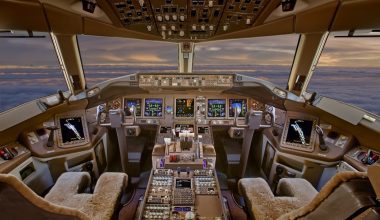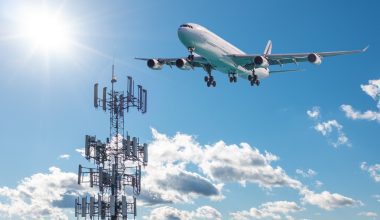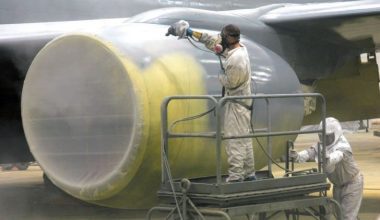Aviation industry of Nepal desperate for strict safety rules
JUNE 5, 2017-KATHMANDU
Last week, two air accidents took place within a span of three days which resulted in killing three crews and injuring three others. A Let L-410UVP-E20 aircraft belonging to Summit Air (Goma Air) crashed when it attempted to land on runway 06 at Lukla-Tenzing-Hillary Airport airstrip in Nepal on May 28 killing two cockpit crews on board. Likewise a twin engine PZL M-28 Skytruck aircraft operated by Nepal Army, the cargo aircraft en-route to Simikot from Surkhet was diverted to Bajura Airport, caused by adverse weather condition crashed when the aircraft skied off the runway. The aircraft was flipped soon after the landing at Bajura, killing Nepal Army Colonel Kailash Kumar Gurung and injuring Major Pilot Anita Ale and Warrant Officer Purna Bahadur Khadka.
Is Nepalese Sky Safe: –
These two irrevocable air mishaps unequivocally prove how precarious it is to fly in Nepalese sky that has grown relatively unsafe for flyers in recent years. Government records suggest that ever since Nepal’s skies were opened to flying, around 70 air accidents have taken place in as many years, averaging two accidents per year. This record does hint that flying in Nepal is anxious with life-threatening dangers for a crews and passengers opting to take the aerial route to reach his or her destination. Over the past few years, air accidents have gone up in the nation, thanks to the arrival of a horde of private airlines. Gone are the good old days when the Nepal Airlines Corporation had a monopoly over the Nepali sky, where safety norms of the passengers and aircraft were said to be followed quite strictly. Sadly, with the increase in the number of air service operators, the number of accidents has also increased.
The private airline operators that are motivated more by profit than service are often accused of failing to adhere to the safety norms. It has shown that STOL route private airlines often press their aircraft to fly more hours and also compel their pilots and crew members to work for more hours than the permitted level. The attitude of the private airlines is cited as the basic reason behind the growing number of air mishaps in Nepal. There are other major reasons that make flying in Nepal a trying experience. The difficult terrain and topography of the country, where mainly small aircraft must fly between or above the high hills, gorges and mountains and have to land and takeoff at acutely-positioned short takeoff and landing (STOL) airstrips, give a hellish time to the pilots and airlines operators. Meanwhile, the country’s ephemeral weather condition is also the challenging factor which keeps changing quite often, lack of a sound weather forecasting system and insufficient modern gadgets and equipment inside the aircraft and outside of it make the task of flying a passenger aircraft a testing experience for all those concerned.
Ageing aircraft and lackluster adherence to flying and air safety norms and rules add another headache to the passengers and civil aviation authority responsible for regulating air safety. This unfavorable situation has even compelled the International Civil Aviation Organization, which promotes air safety, to criticize the Nepalese aviation sector and issue a decree to the Nepalese civil aviation authority to upgrade the air safety measures and implement them effectively. Loudly European commission had restricted Nepalese Airline Companies under its airspace for the first time in December 5, 2013 and is continue to hold ban until date after the Civil Aviation Authority of Nepal (CAAN) botched to rectify safety inadequacies.
Whenever an air accident takes place, the common trend is to put the blame squarely on pilot error or on other human errors. This is done to give a clean sheet to the airline operators or the aircraft manufacturers. In some cases, pilot error does take place, but there are times when mechanical snags and defects in the aircraft are cited for the grave air accidents that kill passengers. Whenever an accident takes place, the government authority must scrutinize all aspects that led to the accident so as to tighten the safety of air services in a nation like ours where flying is tinged with some sense of fear. A small mistake from the pilots or a tiny mechanical snag in the small aircraft may lead to a big accident, causing the loss of many lives and property in the form of damage to the aircraft.
The two latest air accidents must be an eye opener for the Civil Aviation Authority of Nepal (CAAN) to implement all the air safety measures effectively and compel all airlines to comply with them. There must not be any let-up in compelling the airlines to observe these measures aimed at making air service safe. CAAN must keep perpetual watch on the private airlines that have the tendency to overlook the flying rules. Apart from compelling the airline operators to follow the rules strictly, our aviation authority must now gear up to equip aircraft, airports and related places with modern gadgets to ensure the safety of air travel. It is often said that while flying from the tourist town or STOL destinations, pilots have to rely on themselves to fly through the difficult terrain as they often lose contact with the airports situated. CAAN now is in urgent need to address such a situation while upgrading the standard of the landing strip situated in the many hill and mountain regions.
CAAN’s responsibility:-
The major responsibility of making the Nepalese Sky safe lies on the shoulder of CAAN, which must work as an honest government agency to regulate all airline companies while introducing different methods and measures to upgrade air safety in the nation. Merely forming a probing committee and bringing out dull reports on the air crashes after following the standard ICAO investigating procedure. Air safety is something you should bear in mind when deciding to fly internally in Nepal, but this has to be weighed up against the risks of travelling by road and the time that is saved by flying. Given the choice between a 45-minute flight and a 17-hour bus ride on poorly maintained mountain roads, most people prefer to fly.






